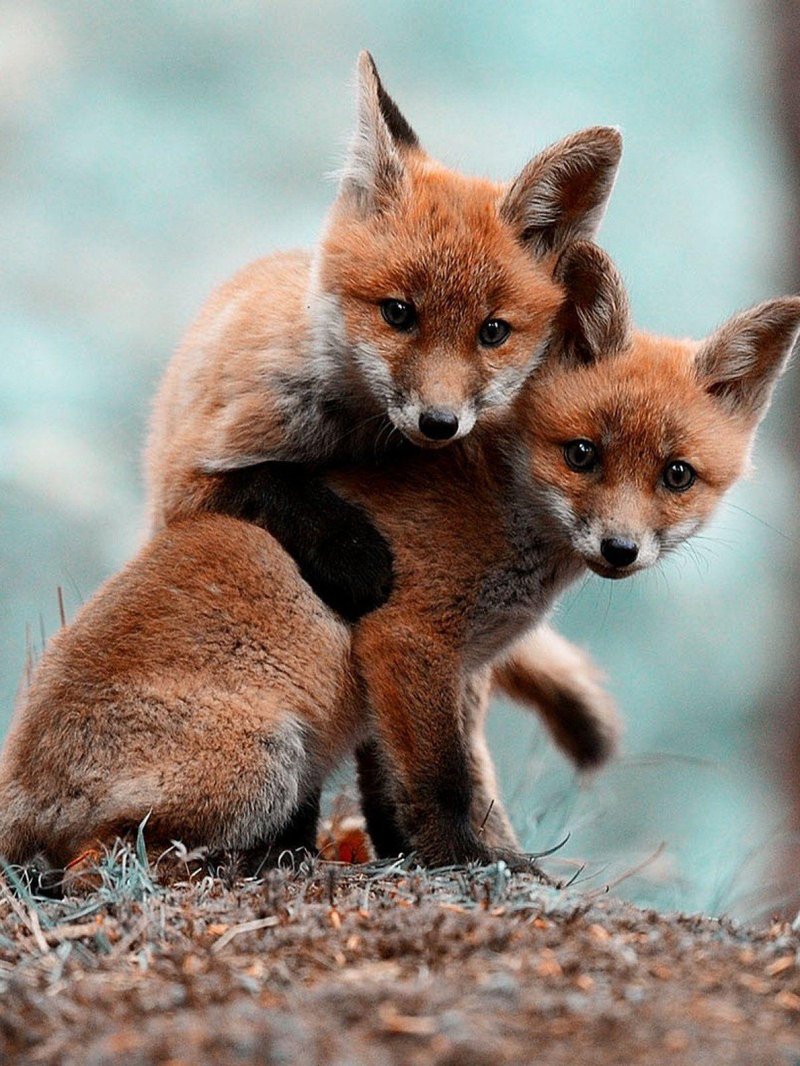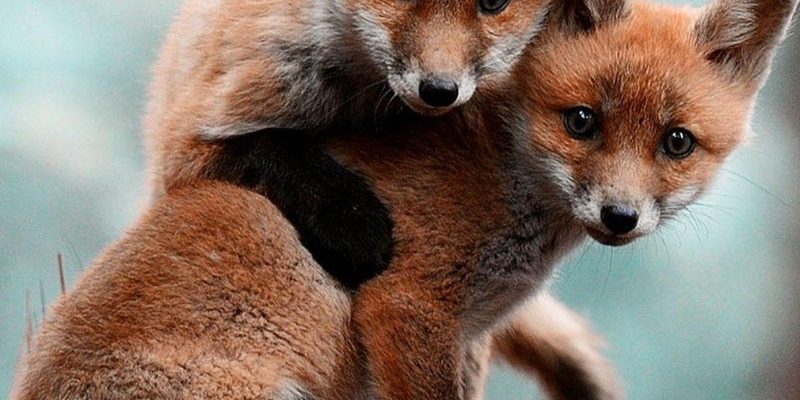
You might wonder how foxes juggle their roles as both caregivers and hunters. Well, here’s the thing: they’re incredibly resourceful. Raising young foxes isn’t just about feeding them; it involves teaching them survival skills too. It’s like a crash course in the wild where every moment is a learning opportunity. Let’s dig deeper into this enchanting world of fox family life.
Understanding the Fox Family Structure
Foxes are generally social creatures, forming family units that often include a breeding pair and their offspring. The family structure is vital to how they raise their young. A typical fox family operates within a territory that can span across several miles, and they defend it fiercely.
During the breeding season, which usually occurs in late winter, the female fox will seek a mate, and together they’ll establish a den where she can give birth. This den, often tucked away in a secluded spot under a fallen tree or in a rocky crevice, serves as a safe haven for the newborn pups. Here’s where nurturing begins—inside this cozy sanctuary, the vixen can protect her little ones from predators and harsh weather.
The father fox, or dog, plays a crucial role too. While the mother focuses on nursing the pups, he hunts and brings food back to the den. This collaborative effort ensures the young foxes receive proper nutrition, which is essential for their growth and development.
Birth and Early Life of Fox Pups
Fox pups are born blind and helpless, weighing about a pound at birth. They’re completely dependent on their mother for warmth, food, and protection. Typically, a female fox gives birth to about four to six pups during the spring. At this stage, they’re like tiny, furry potatoes—cute but utterly defenseless.
For the first few weeks, the vixen stays close, nursing her pups and keeping them safe. You might be surprised to learn that she’ll often leave the den only for brief moments to hunt or stretch her legs. If you ever see a fox out during the day, it’s likely a mother making a quick trip to gather food.
As the pups grow, they start to open their eyes, become more active, and begin to explore their surroundings. Watching them take their first wobbly steps outside the den must be a heartwarming sight! They begin to interact with each other, playing and practicing their future hunting skills.
Teaching Survival Skills
As the pups get older, usually around three to four weeks, the real fun begins. This is when the mother fox starts to teach them essential survival skills. You might say she takes on the role of a teacher—showing them how to hunt, find food, and avoid dangers.
During playtime, the pups learn how to stalk, pounce, and even share food. It’s a crucial part of their development; practice makes perfect, after all. The mother often brings live prey back to the den, like small rodents or birds, allowing the pups to observe their instincts in action. These lessons are vital because, in the wild, knowing how to catch a meal means survival.
Additionally, the pups learn about their environment through exploration. They sniff around, dig in the dirt, and discover various plants and creatures. This hands-on experience is their version of a wild classroom, helping them understand the world around them.
Feeding and Nutrition
Foxes have varied diets, so their approach to feeding their young is similarly diverse. The vixen will provide a diet rich in protein and fat to ensure her pups grow strong. When she hunts, she typically brings back small mammals and birds, but sometimes fruits and insects are also part of the menu.
As the pups grow older and start eating solid food, you’ll notice them feasting on the leftovers that their mother brings home. It’s common for the vixen to regurgitate food, making it easier for the pups to eat while they learn how to hunt on their own.
Interestingly, foxes have a unique way of storing food. They sometimes bury extra prey in the ground, creating a sort of larder for tough times. This behavior is crucial during the early stages of raising young when food might be less abundant.
Denning Behavior and Safety Measures
The den plays a significant role in protecting young foxes from predators. Foxes are quite strategic about where they build their dens, often choosing locations that are hard to access. They’ll dig deep burrows and create multiple exits to escape quickly if danger approaches.
As the pups grow, their curiosity leads them outside more often. Here’s the thing: while exploration is exciting, it also increases the risk of encountering threats like larger predators or even humans. That’s why the vixen stays close, watching over them and teaching them to recognize risks.
When danger is near, foxes use various vocalizations to communicate urgency. They have a range of sounds, from barks to yips, to alert their young. If the situation feels too risky, the mother may lead her pups to a more secure location until the coast is clear.
Independence and Leaving the Nest
By the time the pups are about three months old, they start to gain independence. This phase is bittersweet—it’s a sign they’re growing up, but it also means they’ll soon leave the family unit. During this period, they’ll practice their hunting skills more seriously under their mother’s watchful eye.
The pups may follow their parents on hunting trips, becoming little shadows eager to learn. It’s an exciting time, as they begin to find their identities within the family structure. Eventually, the father fox may start to take a step back, allowing the mother to take the lead in hunting and training.
By the autumn, most of the pups will be ready to leave the den for good. Though they’re independent, they often stay within the territory to learn from their parents for a bit longer. It’s a gradual transition that ensures they’re fully prepared for their own journeys.
The Importance of Family Bonds
The bond between fox parents and their pups is incredibly strong. This connection truly highlights the essence of family in the wild. Just like in human families, the time spent together during these crucial early months shapes the pups’ future behavior and survival skills.
Even after the young foxes leave the den, they often maintain relationships with their parents and siblings. It’s not uncommon for siblings to form small groups, known as “leagues,” helping each other find food and establish territories. This communal support plays a significant role in their survival.
The lessons learned during their formative years remain with them, influencing their interactions with other foxes and their environment. You might say that the nurturing and teaching they receive from their parents shapes the next generation of foxes, ensuring the species not only survives but thrives in the wild.
In conclusion, the way foxes raise their young is a beautiful dance of instinct, teaching, and bonding. From the cozy beginnings in the den to their exciting adventures in the wild, every step is a vital part of their growth. By understanding these fascinating family dynamics, we can appreciate the resilience and resourcefulness of these remarkable animals.

